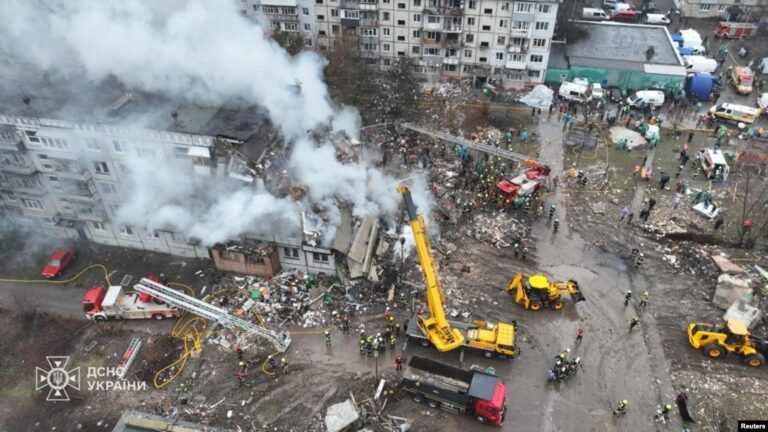Russia launched its most extensive air assault on Ukraine since the conflict began, marking a significant escalation in the ongoing war. The coordinated strikes targeted multiple cities across Ukraine, causing widespread damage and forcing emergency responses. This latest offensive underscores the intensifying military confrontation between the two nations and raises urgent questions about the trajectory of the conflict.
Russia launches largest air assault on Ukraine raising regional security concerns
Monday’s unprecedented aerial operation by Russian forces marked the most extensive air assault since the conflict began, targeting multiple strategic locations across Ukraine. The coordinated offensive included hundreds of missiles and drones launched simultaneously, aiming to disrupt Ukrainian military infrastructure and disable critical communication networks. Ukrainian defense systems managed to intercept a significant portion of the attack; however, reports indicate substantial damage to key logistics hubs and power facilities, intensifying humanitarian concerns.
The scale and intensity of the assault have sent ripples across the region, with neighboring countries expressing heightened alarm over escalating hostilities. Analysts warn that the operation could trigger broader security challenges, as nations reassess their defensive postures amid fears of spillover. Key concerns include:
- Potential disruption of energy supplies across Eastern Europe
- Increased refugee flows exacerbating regional humanitarian strain
- Heightened risk of miscalculation between NATO forces and Russian military units
| Target Type | Estimated Impact | Ukrainian Response |
|---|---|---|
| Air Defense Sites | Severe damage | High interception rate |
| Power Stations | Partial blackout in regions | Emergency restoration initiated |
| Command Centers | Disrupted communications | Backup systems activated |
Impact on civilian infrastructure intensifies humanitarian crisis in affected areas
Continuous air strikes have severely damaged key utilities, leaving millions without access to essential services. Power grids and water treatment plants have been hit hard, plunging entire communities into darkness and cutting off clean water supply. Hospitals and schools, vital to civilian well-being, have also suffered significant destruction, exacerbating the already dire living conditions in conflict zones. Relief efforts face mounting obstacles as infrastructure damage disrupts transportation routes, delaying the delivery of humanitarian aid and medical supplies.
The humanitarian fallout is escalating rapidly, with several critical impacts noted:
- Displacement of families due to destroyed homes and lack of basic amenities
- Increased incidence of waterborne diseases linked to sanitation breakdowns
- Collapse of communication networks, hindering coordination of emergency response
- Overcrowded medical facilities struggling to accommodate the wounded and sick
| Sector | Damage Level | Human Impact |
|---|---|---|
| Power Supply | Severe | 3 Million without electricity |
| Water Treatment | Critical | Contaminated water sources |
| Healthcare | Major | 30% Capacity lost |
| Transportation | Substantial | Freight delays up 70% |
Experts urge enhanced international support and strategic defense coordination
Specialists across geopolitical and military disciplines emphasize the urgent need for a reinforced framework of international aid and a coherent defense strategy among Ukraine’s allies. The unprecedented scale of recent air strikes has exposed critical vulnerabilities in Ukraine’s air defenses, prompting calls for enhanced intelligence sharing, advanced missile defense systems, and greater logistical support. Experts argue that piecemeal assistance risks prolonging the conflict, advocating instead for a unified approach that aligns strategic priorities and resource allocations.
- Deployment of next-generation radar and interception technologies
- Joint training exercises to improve rapid response capabilities
- Streamlined communication channels for real-time battlefield updates
- Comprehensive cyber defense to counter hybrid warfare tactics
| Support Area | Current Status | Recommended Enhancement |
|---|---|---|
| Air Defense Systems | Limited coverage in key regions | Increase deployment of mobile SAM units |
| Intelligence Sharing | Fragmented data exchange | Integrated multinational intelligence platform |
| Training and Coordination | Periodic bilateral drills | Regular multilateral tactical simulations |
Concluding Remarks
The scale and intensity of the recent air strikes mark a significant escalation in the ongoing conflict, underscoring the persistent volatility in the region. As Ukraine continues to contend with sustained military pressure, international observers remain watchful of the developments and their wider geopolitical implications. The coming days are likely to be critical in determining the trajectory of the war and its impact on regional stability.




